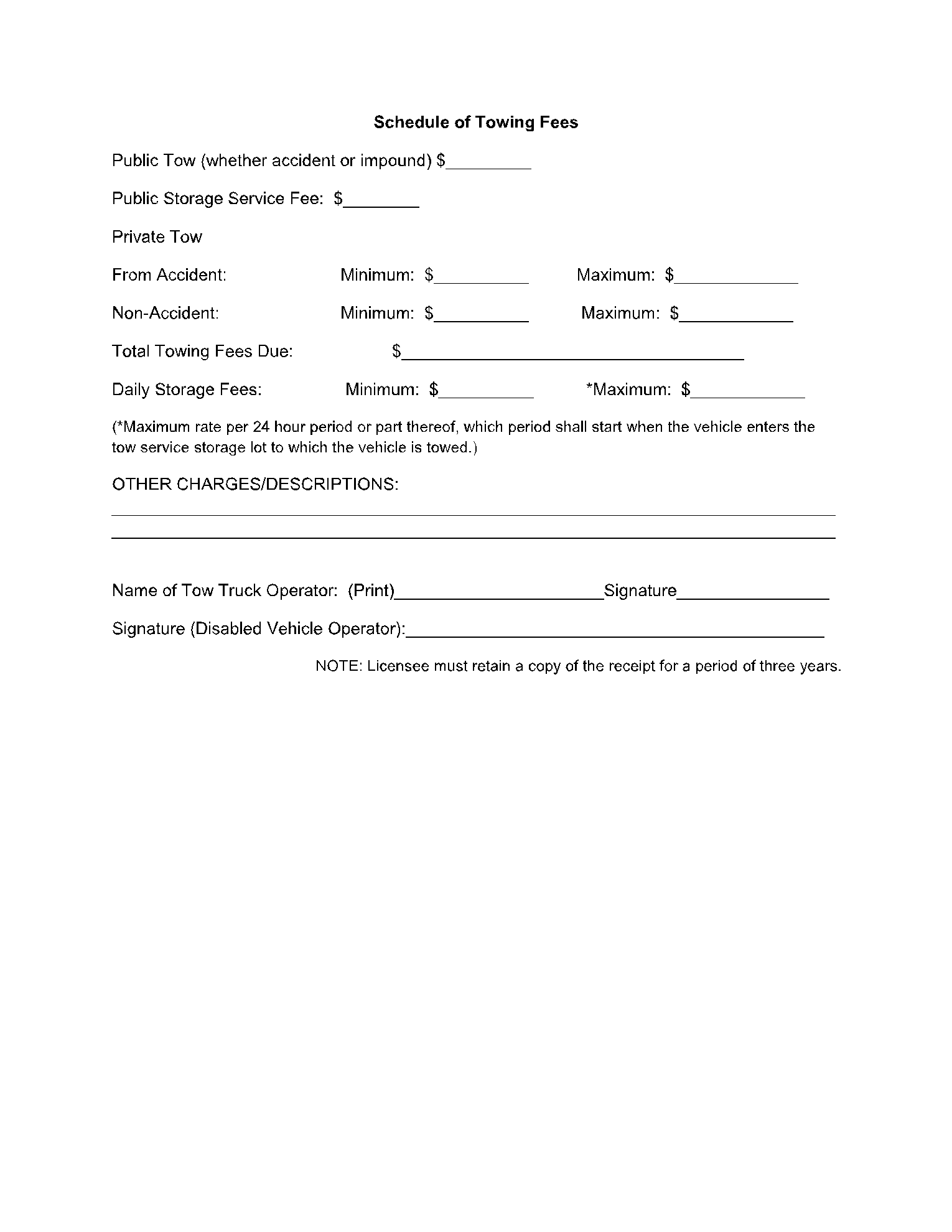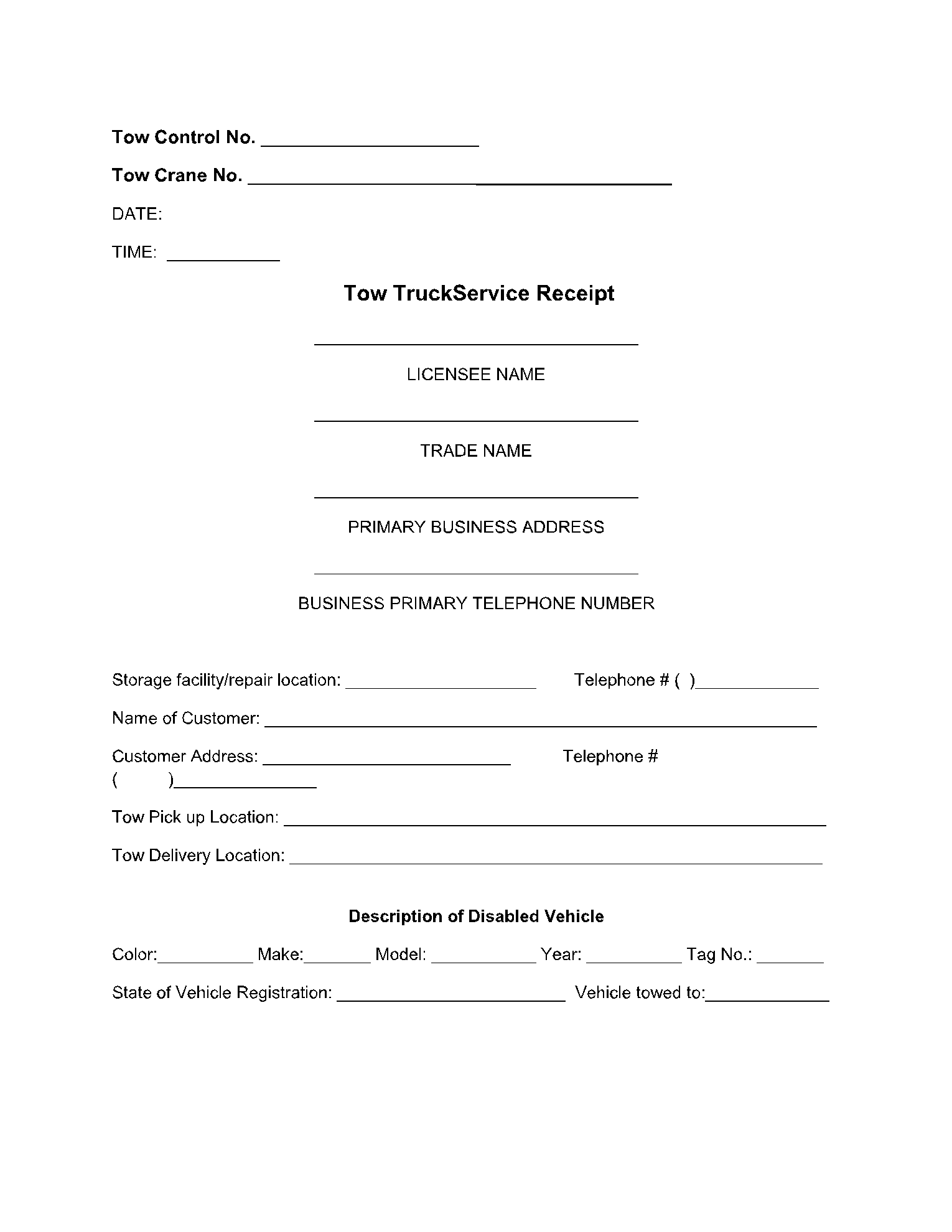Towing means to pull a vehicle with the help of another vehicle by tying up through some chain, rope, or tow bar.
If a vehicle is obstructing traffic or is illegally placed in someone’s property, it is coupled with some other vehicle (preferably a tow truck) and moved out of that place and is dropped off at some specified location.
Towing companies perform these towing services and give you a receipt to maintain the transparency of the whole task and avoid any difficulty.
What Is a Towing Receipt?
A towing receipt is a written document that ensures the proper, transparent, and legal way of charging for the towing services. Towing companies offer their services to help in maintaining the proper flow of traffic or to avoid illegal parking of vehicles.
These companies offer services like moving illegally parked vehicles (either on public property or private property), removing vehicles that are causing traffic blockage or a potential hazard for the road traffic.
A towing receipt should be carefully filled duly signed to make sure that the right vehicle is picked up and dropped off at the correct place. Moreover, it also helps in the accounting aspects of towing, thus allowing the towing companies to charge for their services.
When Can a Vehicle be Towed?
In order to make a legal towing, proper criteria must be fulfilled which is as follows:
Private Property:
- In the case of residential property, towing is immediately allowed.
- In the case of non-residential private property, where NO PARKING signs are displayed, towing is immediately allowed.
- In the case of non-residential private property, where proper signs are not displayed, towing should be allowed after waiting for at least 24 hours.
The above-mentioned points should be kept in mind to avoid any problem.
Public Property:
- At public property, if a vehicle is hazardous to traffic then towing is allowed.
- At public property, when a vehicle is parked and some administrative official or Police officer is allowed to tow the vehicle.
What is included in a Towing Receipt?
A towing receipt comprises of following sections:
Towing corporation's information
- Name of the company
- Website of the company (if any)
- Company addresses
- Phone number
- Email address
Vehicle information
- Make
- Model
- Year
- Color
- License plate number
- State registered
- Vehicle Identification Number (VIN)
(Vehicle Identification Number must be entered carefully; it makes sure that the right vehicle is towed and prevents the trouble faced in case of the wrong vehicle towing)
Customer details
- Full name of the owner
- Contact details
- Reason of towing
- Pick up address
- Drop off address
Fees
- Description (details of the task completed)
- Hours (number of hours allocated to the task)
- Hourly rate (Dollars/ Hour)
- Total amount (Total amount can be calculated by multiplying the number of hours with hourly rate)
- Mention Grand Total (Including the amount of tax charged)
Signature and Date
- Name of the Vehicle owner
- Signature of the Vehicle owner
- Name of Truck operator
- Signature of Truck operator
- Date
Conclusion
To avoid any possible trouble, towing criteria should be strictly followed. The Towing Receipt should be carefully filled, pick up location, drop off location and Vehicle Identification Number (VIN) should be clearly mentioned on the receipt to make the process smooth and efficient.
Picking up the wrong vehicle or dropping off at the wrong place can make you prone to various legal issues and cause real trouble. So, choose a proper Towing template and fill it carefully.
The CocoSign website has many templates for different types of receipts. We provide quality templates for the vehicle towing receipt. Grab your Towing receipt sample now for free of cost.

